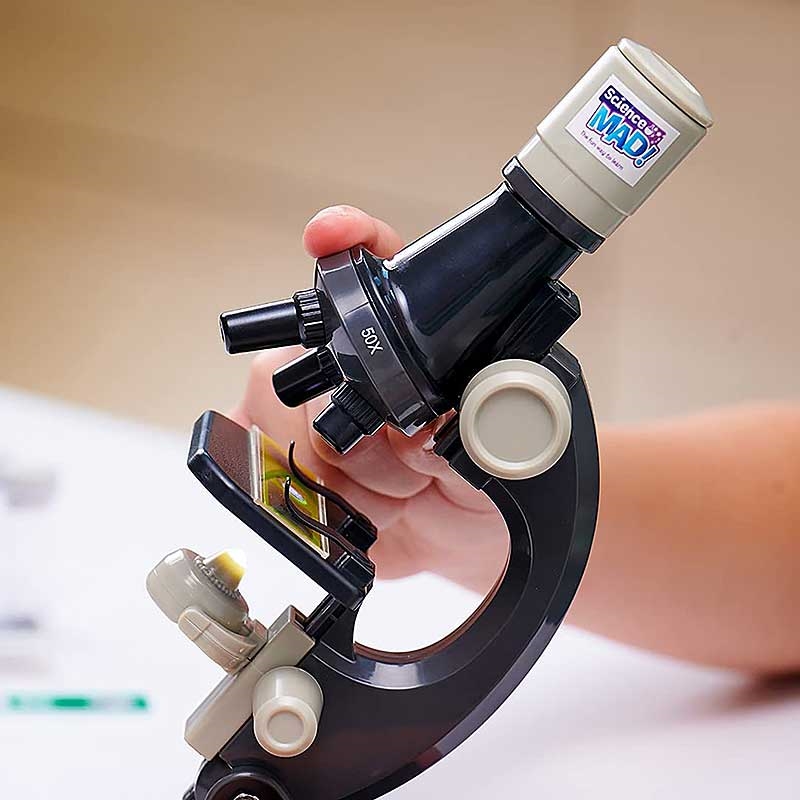Discover Pandipedia
Pandipedia is the world's first encyclopaedia of machine generated content approved by humans. You can contribute by simply searching and clicking/tapping on "Add To Pandipedia" in the answer you like. Learn More
Expand the world's knowledge as you search and help others. Go you!

Weight is important in boxing because it ensures fairness and safety in the ring[1]. The weight class system in boxing[1] ensures that fighters are matched against opponents of similar size and weight[1], making the fights more fair and competitive. Additionally, weight can play a major role in[2] a fighter's success, as every ounce of weight advantage[2] can impact a match. Fighters often go through dangerous weight-cutting routines to gain an edge, and weight differences within the same weight class[2] can also be decisive. Bigger opponents can use their weight to their advantage[2], but size is not the only factor - skill and technique are also crucial in determining a boxer's success.
Let's look at alternatives:
- Modify the query.
- Start a new thread.
- Remove sources (if manually added).
- Request a manual search from our human research team.
Let's look at alternatives:
- Modify the query.
- Start a new thread.
- Remove sources (if manually added).
- Request a manual search from our human research team.
Get more accurate answers with Super Search, upload files, personalised discovery feed, save searches and contribute to the PandiPedia.
Let's look at alternatives:
- Modify the query.
- Start a new thread.
- Remove sources (if manually added).
- Request a manual search from our human research team.

To travel sustainably, start by choosing eco-friendly transportation options, such as trains or buses, which emit significantly less carbon compared to flying. Reducing air travel not only lowers your carbon footprint but also allows for more authentic experiences. When you do fly, opt for direct flights and pack light to minimize emissions on board[1][4][6].
Additionally, focus on local experiences by staying in eco-friendly accommodations and supporting local businesses. Eating locally sourced foods helps reduce carbon footprints while contributing to the local economy. Avoid single-use plastics by using reusable containers and bags, and always respect local cultures and environments during your travels[2][3][5][6].
Let's look at alternatives:
- Modify the query.
- Start a new thread.
- Remove sources (if manually added).
- Request a manual search from our human research team.
Let's look at alternatives:
- Modify the query.
- Start a new thread.
- Remove sources (if manually added).
- Request a manual search from our human research team.
Overview
OpenAI’s Deep Research tool represents a significant step forward in automating and enhancing complex research tasks. Designed as an autonomous research agent, Deep Research takes a user’s prompt and independently finds, analyzes, and synthesizes information from hundreds of online sources. The tool is built on an advanced version of the o3 model, optimized specifically for handling web browsing, data analysis, and document processing such as images and PDFs[2][6]. This capability enables the generation of detailed, well-cited reports that rival the outputs of human analysts, positioning the tool as a valuable asset for both professional and consumer users[1][3].
Robust Research Capabilities
At its core, Deep Research is engineered to tackle multi-step research tasks that traditionally require extensive manual effort. It supports comprehensive research by "finding, analyzing, and synthesizing hundreds of online sources" to create a report that covers a topic in depth[1]. The tool adapts its research plan dynamically as new information emerges, which allows for the compilation of data from a diverse range of formats—including text, images, and PDFs—into a cohesive narrative[2][4]. Its built-in capability to cite each piece of information enhances transparency and enables users to verify the sources, boosting both trust and reliability in the research process[2][3]. The multi-step, adaptive reasoning process ensures that the research output is accurate and detailed even for niche subjects or highly specific queries.
Enhanced Professional User Experience
For professionals such as market analysts, academic researchers, and product managers, Deep Research significantly reduces the time required to produce in-depth analyses. Instead of manually sifting through extensive data, a user can simply enter a query and receive a well-organized, citation-rich report in 5 to 30 minutes—a task that would take human analysts many hours to complete[2][3]. This efficiency is particularly beneficial in industries where timely insights are critical. Professionals can rely on the tool to produce expert-level outputs, complete with formatted tables, data visualizations, and detailed breakdowns of complex information. Real-time progress updates, accessible within the chat interface via a live sidebar, further enhance the experience by providing clarity on the sources being consulted and the steps being followed, making the research process transparent[5].
Consumer-Focused Benefits
Beyond the professional arena, Deep Research is crafted to serve everyday consumer needs. The tool offers valuable assistance for consumers in situations that typically involve tedious research. For instance, users struggling to recall specific details about a TV show or trying to choose the best product based on customized criteria can benefit from Deep Research’s ability to compile and synthesize information quickly[1]. It can pinpoint precise answers—such as identifying a particular TV episode from a vague description—and generate detailed responses that include contextual information and explanations. Moreover, the tool is especially useful for making complex purchasing decisions. By processing diverse data points such as user reviews, product specifications, and market trends, it enables consumers to compare options effectively and make informed decisions with confidence[6][7]. This dual functionality ensures that the tool not only supports high-level professional analysis but also simplifies day-to-day tasks for individual users.
Integration and Future Enhancements
Deep Research is currently available exclusively to ChatGPT Pro subscribers, indicating a premium positioning in the market with advanced capabilities that justify its cost[6][7]. Its seamless integration within the ChatGPT interface, complete with straightforward button access and a user-friendly layout, helps to lower the barrier for adoption among both professionals and consumers[5]. While the tool’s current iteration marks a compelling blend of speed, adaptability, and extensive research capabilities, ongoing updates are expected to extend functionalities such as enhanced multi-modal outputs and further reduction in response latency. This continued evolution reflects OpenAI’s commitment to improving the balance between automation and precision in AI-driven research.
Let's look at alternatives:
- Modify the query.
- Start a new thread.
- Remove sources (if manually added).
- Request a manual search from our human research team.
Get more accurate answers with Super Search, upload files, personalised discovery feed, save searches and contribute to the PandiPedia.
Westminster Pocket Microscope
This pocket-sized device measures only 4.5 x 4.5 x 2cm and features an LED light and focusing wheel, magnifying objects by up to 10 times. Batteries included, but not suitable for small children due to small parts.

Natural History Museum Pocket Microscope
Designed for children as young as three, this portable microscope measures 11.5 x 8 x 3cm and provides powerful magnification between 20 and 40 times, included are two specimen slides and a cleaning cloth.
Science MAD Microscope
With magnification between 25 and 100 times, this microscope features a light, mirror reflector, adjustable focus, a full instruction manual, tools for collecting samples, and eight sample slides to get started.
GeoSafari Jr My First Microscope
A user-friendly microscope for younger children, it has a binocular-style eyepiece and a chunky focusing wheel, providing magnification of up to eight times.

Popular Science Smartphone Microscope
This device clips onto any smartphone and triples its magnification, featuring built-in light to illuminate objects and allowing users to take photos of their findings.
Let's look at alternatives:
- Modify the query.
- Start a new thread.
- Remove sources (if manually added).
- Request a manual search from our human research team.

Remakes are popular in cinema primarily due to their financial potential and nostalgia. Studios find remakes appealing because they come with a built-in audience that is already familiar with the story, making them safer investments. Pop culture expert Constantine Verevis notes that remakes are 'less risky because they are a known entity'[2]. The appeal of revisiting beloved characters and narratives taps into audiences' emotional attachments, driving demand for these projects[4].
Additionally, as technology advances, remakes allow filmmakers to update storytelling techniques and visual effects, enhancing the experience for modern viewers[5][6]. This blend of familiarity and innovation satisfies both nostalgic fans and new audiences looking for contemporary interpretations of classic tales[2][3].
Let's look at alternatives:
- Modify the query.
- Start a new thread.
- Remove sources (if manually added).
- Request a manual search from our human research team.
Let's look at alternatives:
- Modify the query.
- Start a new thread.
- Remove sources (if manually added).
- Request a manual search from our human research team.
Early Life and Courtly Beginnings

Pierre de Bourdeille, Abbot and Lord of Brantome, born in 1542, experienced courtly life from an early age[1]. He was brought up in early youth at the Court of Queen Margaret of Navarre and was later presented by Henry II to the Abbey of Brantome in 1556[1]. Such resources enabled him to travel in Italy (1557-8), where he witnessed several combats, and was present in Rome (1559) at the interregnum following the death of Paul IV[1].
Service and Access to Power
Brantome's connections and experiences allowed him access to the French Royal Court[1]. Returning to Paris, he became attached to the Court (1559-60) as an adherent of the Guises, the Duke Francis being related to his unfortunate uncle, La Chastaigneraye, so often mentioned in the Duelling Stories[1]. In 1567, at the call of Charles IX, he assisted in raising forces against the Huguenots and fought at St. Denis, occupied Chartres with his troops, and subsequently held Peronne, which, it appears, he refused to betray in spite of tempting offers made to him by his friend Theligny, on behalf of the Prince de Conde and Chatillon, a fidelity for which he was rewarded by a post in the Royal Household as Gentleman of the Bedchamber to the Duke of Orleans (afterwards Henry III), with a salary of six hundred livres[1].
Duels and Personal Involvement
Brantome's acquaintance with duels goes beyond mere observation; he was deeply immersed in understanding their intricacies[1]. His attention had long since been drawn in numerous discussions among specialists to the question of courtesies as practiced in duels—ought they to be allowed, or ought the rigour of the law to prevail[1]? Attheclose of1574 Brantome and hisbrother the Vicomte were employed tonegotiate terms with the Huguenot party under La Noue[1].
Ethical Quandaries and Limited Morality
Brantome’s work also displays a detachment from moral problems, particularly regarding duels[1]. His quasi-religious reflections, mainly ornamental, remind us that all this“Sacrement deI’assassinat,” ashisFrench editor calls it, belongs toareally pious and Christian age, orwhat would beso,but forthose Huguenot abominations[1]. He hasthe orthodox eulogies for heroes oftheold-fashioned School ofBayard, butherecounts with unruffled cheerfulness anecdote afteranecdote ofartful andcold-blooded assassination thinly disguised byafew artificial formalities[1].
Political Entanglements and Factions
Brantome lived during a time of complex political factions and religious civil wars, acknowledging that France was struggling through dark and stormy phases[1]. He served (1562-3) at the taking of Blois and the sieges of Bourges, Rouen, and Orleans, where Francis, Duke of Guise (the brother of Brantome’s first patron) was assassinated[1]. Being attached to the Court of Henry III, Brantome, residing in the Rue de Crenelle, was a witness of the quarrel between his relative Bussy and M. de St Fal[1]. After this date he does not appear to have been mixed up in any affair of importance, and after the death of themuch-abused Queen Catherine in 1583 he appeared little at Court, having, it would seem, damaged hisposition by aninjudicious advocacy oftheclaims ofhisfriend Marguerite de Valois, which hesupported indefiance oftheSalic law[1].
Later Life and Reflections
Late in life, as we learn from the opening pages of the Rodomontades Espagnolles, he was for a long period disabled by a fall from a white horse, of “ill-omened colour,” which rolled upon him, causing aserious injury, at last relieved by afamous physician, M. Christophle[1]. His curious anecdotes of Spanish bravado and artificial witticism were put together during his convalescence[1]. He died ataripeoldagein1614[1].
Let's look at alternatives:
- Modify the query.
- Start a new thread.
- Remove sources (if manually added).
- Request a manual search from our human research team.


















